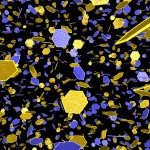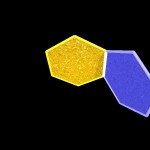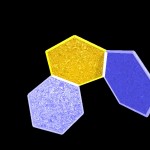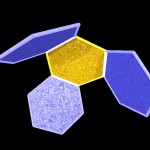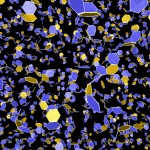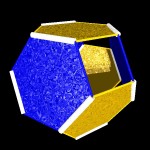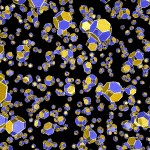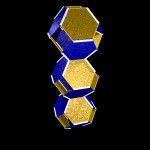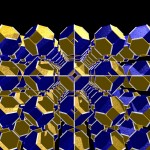The molecular cages visualized below have been described by Liu et al in Science, volume 322, page 436. They refer to self-assembling ordered macromolecular structures and are formed from two different molecular building blocks (here depicted in yellow and blue colour), of planar, hexagonal geometry with similar size. (For chemical details please refer to the original publication.) Crucial for self-assembly is the ability of these building blocks to form hydrogen bonds with each other (i.e. in each case with the other building block) at their edges. So they have sticky edges specific for the other building block.
- Building blocks
By forming such hydrogen bond connections (here depicted in white colour) the building blocks can assemble in an ordered way,…
…finally forming a body similar to a truncated octahedron, one of the Archimedean polyhedra.
- Truncated octahedron
- Truncated octahedrons
These bodies will finally form large, three-dimensional networks similar to the networks formed by zeolites. They can incorporate a large range of chemical species and may serve as some sort of nano-reaction tubes.
- Framework

